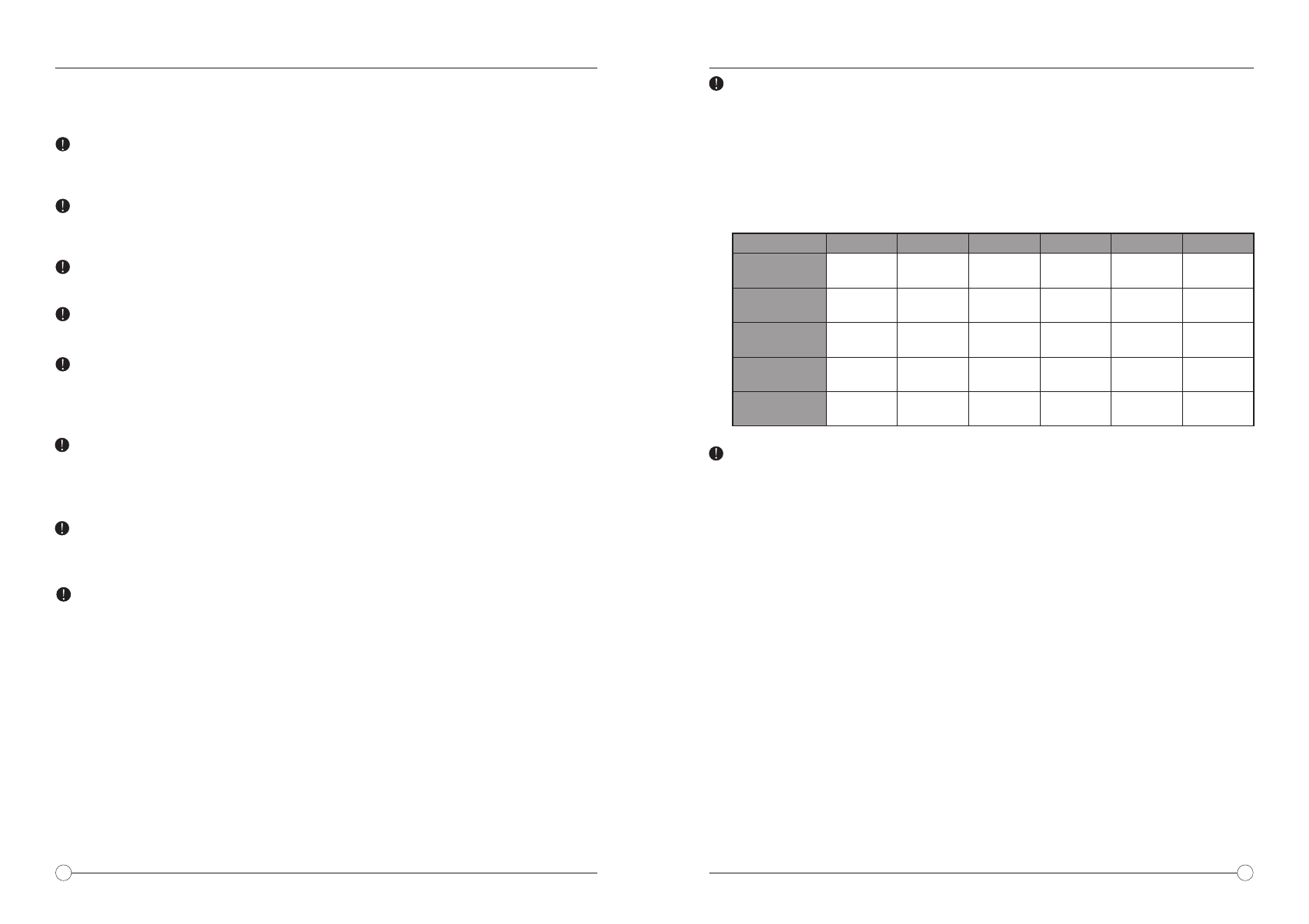Manual

07
06
• A battery pack which consists of different types of cells
(including different manufacturers)
• A battery that is already fully charged or just slightly discharged
• Non-rechargeable batteries (they pose an explosion hazard)
• Batteries that require a different charge technique from NiCd, NiMH, LiPo
or gel cell (Pb, lead-acid battery)
• A faulty or damaged battery
• A battery fitted with an integral charge circuit or a protection circuit
• Batteries installed in a device or which are electrically linked to other
components
• Batteries that are not expressly stated by the manufacturer to be suitable for
the currents the charger delivers during the charge process
• Did you select the appropriate program suitable for the type of battery you are charging?
• Did you set up adequate current for charging or discharging?
• Have you checked the battery voltage? Lithium battery packs can be wired in parallel
and in series, i.e. a 2-cell pack can be 3.7V (in parallel) or 7.4V (in series).
• Have you checked that all connections are firm and secure? Make sure there are no
intermittent contacts at any point in the circuit.
Before you Start Charging or Discharging your Batteries Consider the
Following
Never Attempt to Charge or Discharge the Following Types of
Batteries
3.7V/cell
Nominal
Voltage
Min. Discharge
Voltage
Max Charge
Voltage
Storage
Voltage
Allowable
Fast Charge
3.7V/cell
4.2V/cell
3.8V/cell
≦1C
≧3.0V/cell
LiPo
LiIon
3.6V/cell
4.1V/cell
≧2.5V/cell
≦1C
3.3V/cell
3.6V/cell
3.3V/cell
≦4C
≧2.0V/cell
LiFe
1.2V/cell
1.5V/cell
n/a
1C-2C
≧0.85V/cell
NiCd
1.2V/cell
1.5V/cell
n/a
1C-2C
≧1.0V/cell
MiMH
2.0V/cell
2.46V/cell
n/a
≦0.4C
≧1.75V/cell
Pb
WARNING
FAILURE TO FOLLOW THESE IMPORTANT SAFETY NOTES OR THE INSTRUCTION
MANUAL CAN RESULT IN SEVERE INJURY, PROPERTY DAMAGE OR LOSS OF LIFE.
Please read this entire instruction manual completely and attentively before using
this product, as it covers a wide range of information on operation and safety.
Never leave the charger unattended when it is connected to its power supply. If any
malfunction is found, TERMINATE THE PROCESS AT ONCE and refer to the
instruction manual.
Keep the charger away from dust, moisture, water, excessive heat, direct sunlight
and vibration.
The maximum allowable input voltage is 120 VAC when using the supplied AC power
cord or 15V DC when using an external DC power source.
The charger and the battery should be put on a heat-resistant, non-flammable and
non-conductive surface. Never place them on a car seat, carpet or other flammable
surface. Keep all flammable volatile materials away from the operating area.
Make sure you know the specifications of the battery you are charging or discharging
to ensure it meets the requirements of this charger. If the program is set up incor-
rectly, the battery and charger may be damaged. Fire or explosion can occur due to
overcharging.
To avoid short circuiting between the charge lead, always connect the charge
cable to the charger first, then connect the battery. Reverse the sequence when
disconnecting.
Charging
During the charge process, a specific quantity of electrical energy is fed into the battery.
The charge quantity is calculated by multiplying charge current by charge time. The
maximum permissible charge current varies depending on the battery type or its perfor-
mance, and can be found in the information provided by the battery manufacturer. Only
batteries that are expressly stated to be capable of quick charge should be charged at
rates higher than the standard charge current.
Connect the battery to the terminal of the charger. Red is positive and black is negative.
In the event there is any significant resistance in the battery cable and/or connector, the
charger will not be able to properly detect the resistance of the battery pack resulting in
an error. It is essential in order for the charger to operate properly that the battery charge
leads should be of adequate quality for the size of the battery.
Always refer to the manual by the battery manufacturer pertaining to charging methods.
Operate according to their recommended charging current and charging time. Lithium
batteries, in particular, should be charged strictly according to the manufacturer's
instruction.
Pay close attention to the connection of lithium batteries.
Do not attempt to disassemble the battery pack.
Please take note that lithium battery packs can be wired in parallel and in series. In the
parallel connection, the battery’s capacity is calculated by multiplying the single battery’s
capacity by the number of cells, bearing in mind that total voltage stays the same. If the
voltage is imbalanced, it may cause a fire or explosion. Lithium batteries are always
recommended to be charge in series.
WARNINGS AND SAFETY INFORMATION
WARNINGS AND SAFETY INFORMATION
Standard Battery Parameters










